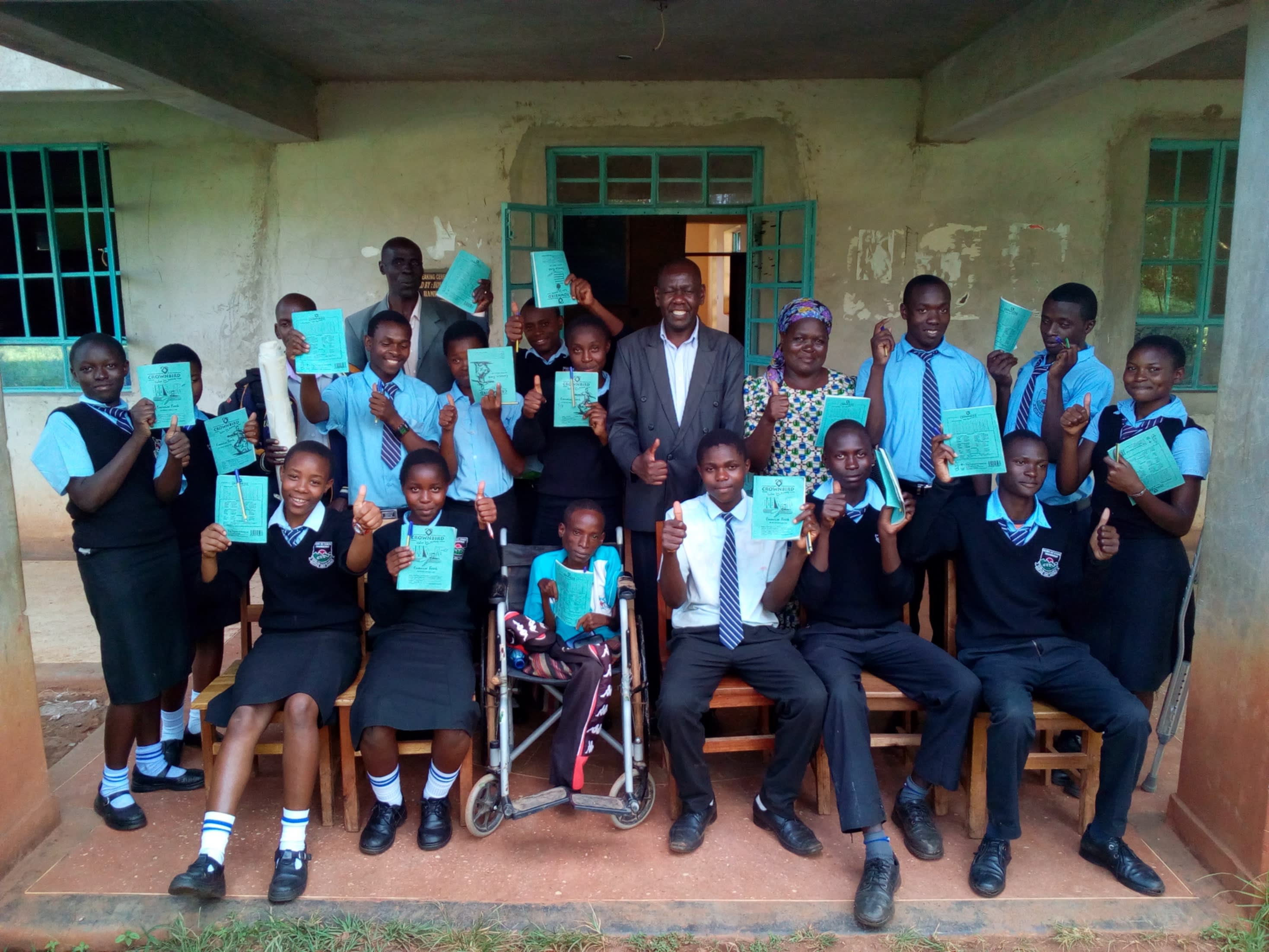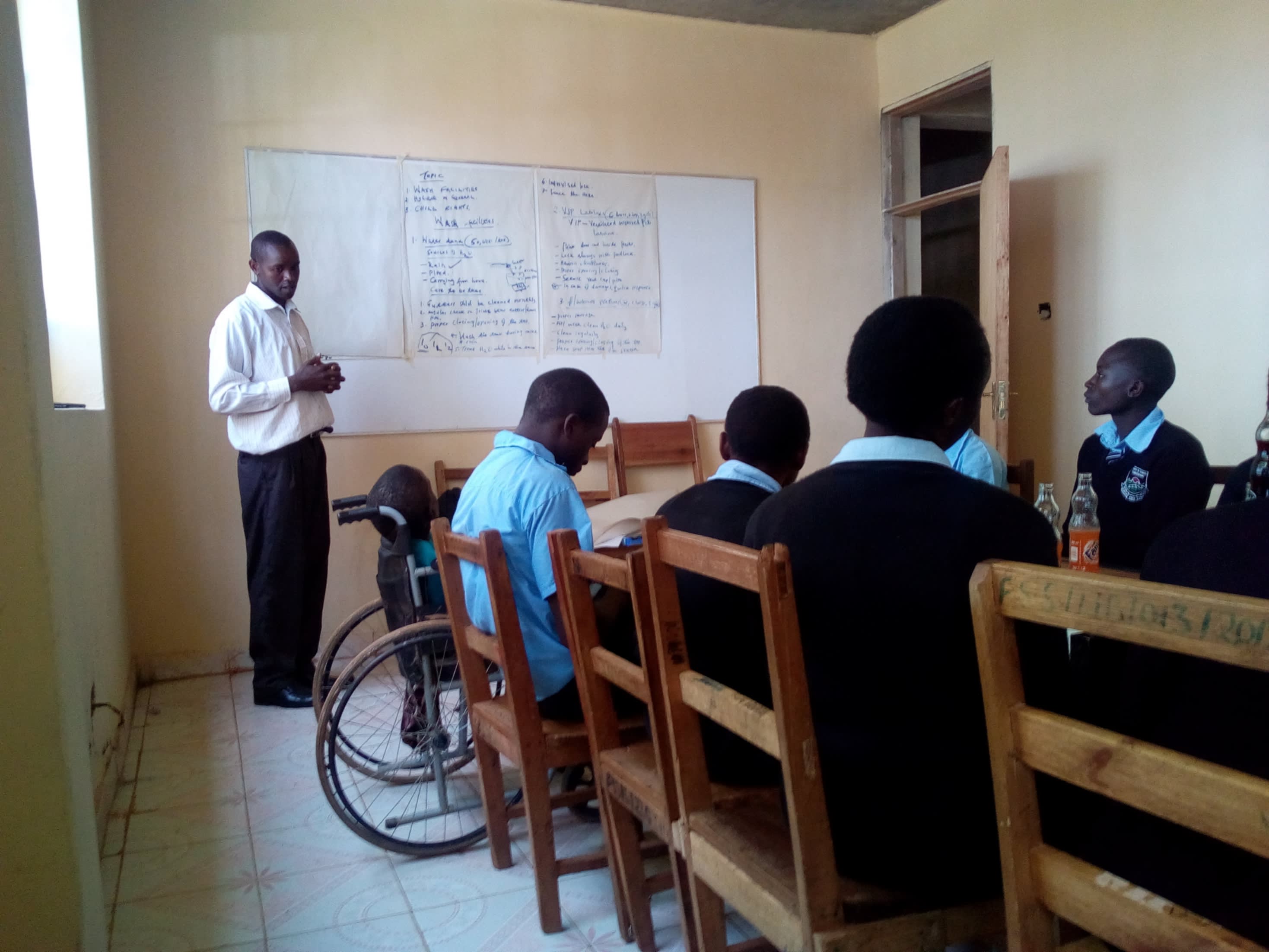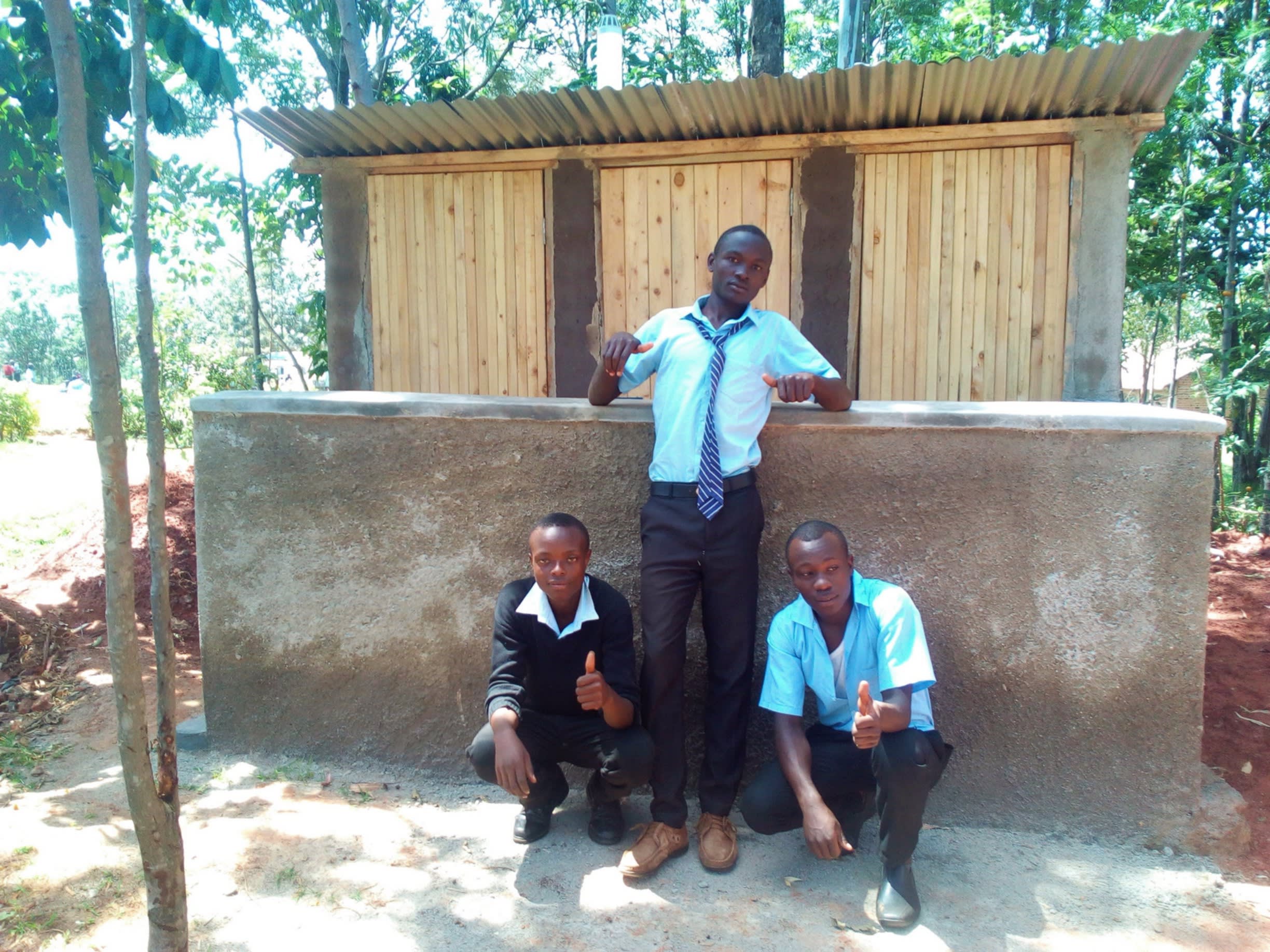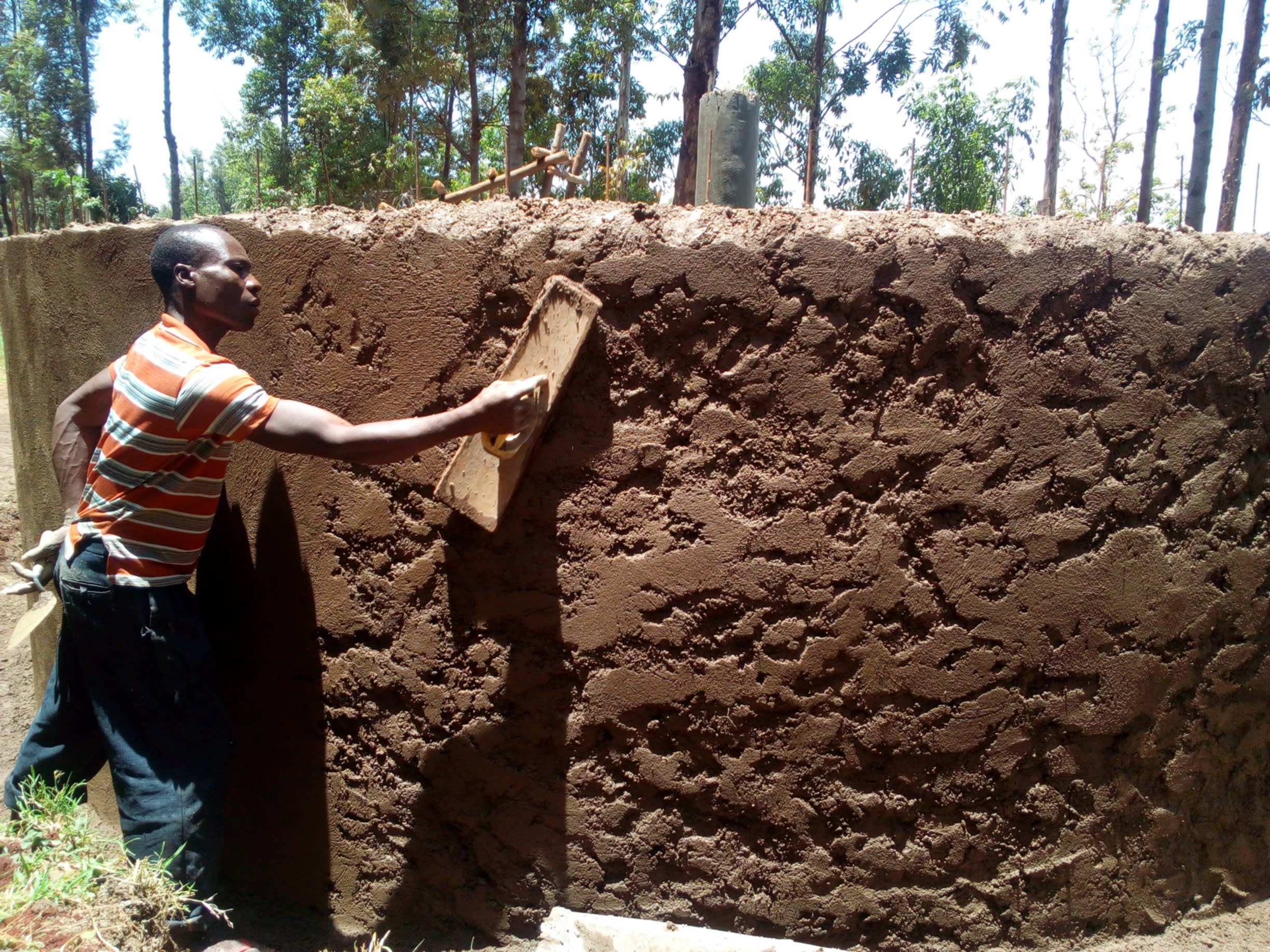This project is a part of our shared program with Western Water And Sanitation Forum (WEWASAFO). Our team is pleased to directly share the below report (edited for clarity, as needed).
Welcome to the School
Friends Secondary School Shamakhokho was started by community members in 2002, and is currently sponsored by Friends Church.
The school currently has a total student population of 316, but according to Principal Mr. Otieno, the population is expected to rise because of ongoing form one enrollment. 13 teachers are employed here. The school also has 10 support staff who ensure that the school activities are run in an orderly manner.
The school is located near Shamakhokho Market, where they have the ability to sell fish that they rear in their fish pond on campus.
Proximity to any market center is usually a blessing for many people, especially traders, but not here in Shamakhokho. Bars around the community center are full of prostitution. Some students attending Friends School Shamakhokho were born out of prostitution. These students have had to persevere through the shame of being called bastards by their peers. Many of these students stay with their grandparents because they cannot be accepted by their step-fathers. Some of the young girls end up giving in to sex to earn enough money for buying basic needs, since their elderly grandparents cannot provide for them. School fee payment in this institution is like a nightmare because student guardians are either impoverished or have neglected their families.
A normal day starts with students, teachers and support all preparing for an early arrival at school, sometimes as early as 6:30 AM. Students start by cleaning their classrooms as teachers prepare for the day's lessons.
Students are taught different subjects ranging from languages, arithmetic, humanities to sciences. While teachers and students are in the classroom, support staff is busy cooking, cleaning the compound, and attending to parents and visitors.
Water Situation
This school is connected to a piped water system that feeds from a source in a different community. Piped water may sound like a good thing, but it's not even near a reliable service for those living in Kenya. These pipes are used to ration water to the school, making it available on Mondays and Thursdays. Come every Monday and Thursday, the school must draw as much water as they can to keep in two large, plastic tanks (the tanks can hold up to 10,000 liters each). There are a few taps on this container, and students must wait in line to fetch water as it's needed.
These two days of water cause the school to often run short of what they need. Not only that, but so many things go wrong with the piped system that on any given Monday or Thursday, the school might miss their chance to get water. When they run out of what they stored from the piped system, they have no alternative source. That's why the rationing is so strict, and why the school sacrifices water that could be used for cleaning.
Sanitation Situation
There are 13 pit latrines total, but some of them are almost full. The floors are plastered in concrete, the walls are brick, and the roofs are iron sheets. These are not very clean, since there isn't enough water to wash them with.
There is only one hand-washing station on school grounds. Garbage is piled behind the buildings and burned when it gets too high.
Despite these poor conditions, the principal and his students are still excited to learn about how they can make their environment and themselves cleaner and healthier. Principal Omutondo told us that "many people in this area lack information and awareness on health issues affecting them, and thus many suffer without any assistance." The school is excited that they have the upcoming opportunity to learn!
Plans: Hygiene and Sanitation Training and Hand-Washing Stations
Training will be held for two days. The facilitator will use PHAST (participatory hygiene and sanitation transformation), ABCD (asset-based community development), CTC (child to child), lectures, group discussions, and handouts to teach health topics and ways to promote good practices within the school. The CTC method will prepare students to lead other students into healthy habits, as well as kickstart a CTC club for the school. This CTC club will oversee the new facilities, such as hand-washing stations, and make sure they are kept clean and in working condition. The two hand-washing stations will be delivered to the school, and the club will fill them with water on a daily basis and make sure there is always a cleaning agent such as soap or ash.
Plans: Rainwater Catchment Tank
A 50,000-liter rainwater catchment tank will be constructed on school grounds. Teachers, students, and parents will gather the materials needed for this project, including sand, ballast, bricks, and hardcore. This contribution will fuel a sense of responsibility for the school and community to take care of their new facilities. Once materials are mobilized, the WEWASAFO team will arrive to lead the construction effort.
With adequate clean water, the school will have water for drinking, cooking, cleaning, and hand-washing. The school will no longer have to rely on rationed water that causes a strain on their student body and their budget.
Plans: VIP Latrines
Two triple-door latrines will be constructed, providing three new latrines for each gender. Latrine materials will be mobilized the same way as the tank, ensuring the school feels these facilities are truly theirs. And with a rainwater catchment tank nearby, there will be enough water to keep them clean.
School administration and parents are positive that with these new facilities and training, their students’ academic performance will improve. Students will be healthy and empowered to focus on what’s important!

 Rainwater Catchment
Rainwater Catchment
 Rehabilitation Project
Rehabilitation Project

































